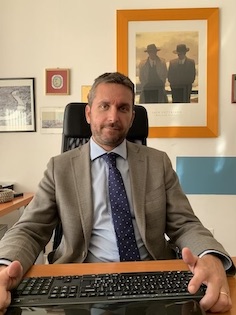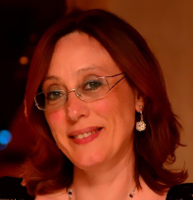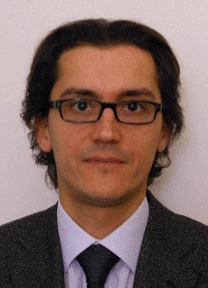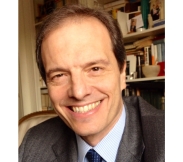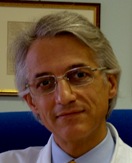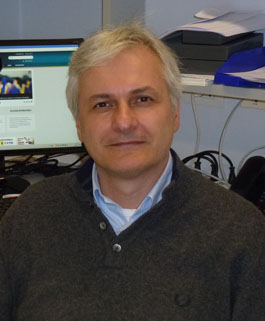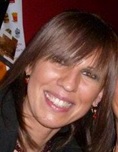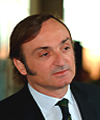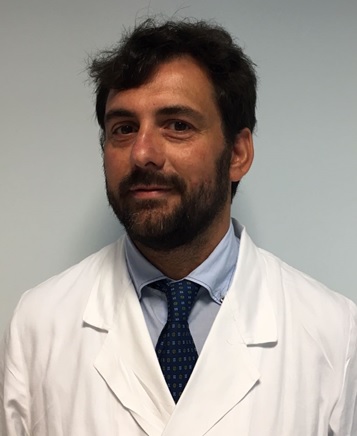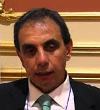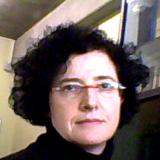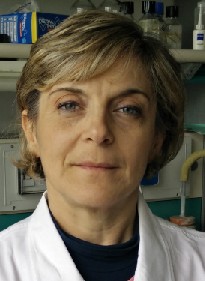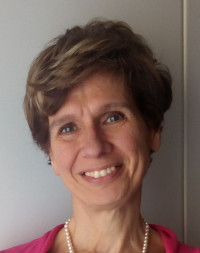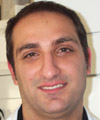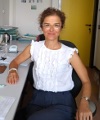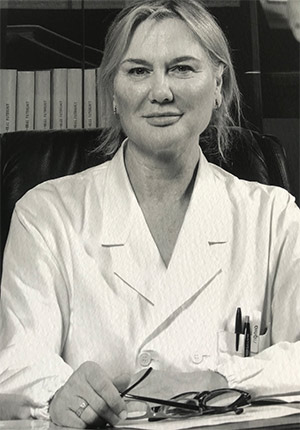Studying at the University of Verona
Academic calendar
The academic calendar shows the deadlines and scheduled events that are relevant to students, teaching and technical-administrative staff of the University. Public holidays and University closures are also indicated. The academic year normally begins on 1 October each year and ends on 30 September of the following year.
Course calendar
The Academic Calendar sets out the degree programme lecture and exam timetables, as well as the relevant university closure dates..
| Period | From | To |
|---|---|---|
| 4° - 5° - 6° ANNO - INSEGNAMENTI ANNUALI | Oct 2, 2023 | May 28, 2024 |
| 2°-3°-4°-5°-6° ANNO - 1° SEMESTRE | Oct 2, 2023 | Dec 23, 2023 |
| 1° ANNO INSEGNAMENTI ANNUALI | Oct 16, 2023 | May 28, 2023 |
| 1°ANNO - 1° SEMESTRE | Oct 16, 2023 | Dec 23, 2023 |
| 2° SEMESTRE | Feb 12, 2024 | May 28, 2024 |
| Session | From | To |
|---|---|---|
| ESAMI DI PROFITTO SESSIONE INVERNALE A.A. 2022/2023 E INSEGNAMENTI I° SEMESTRE A.A. 2023/2024 | Jan 9, 2024 | Feb 9, 2024 |
| ESAMI DI PROFITTO SESSIONE ESTIVA LAUREANDI A.A. 2023/2024 | May 30, 2024 | Jun 28, 2024 |
| ESAMI DI PROFITTO SESSIONE ESTIVA A.A. 2023/2024 | May 30, 2024 | Jul 31, 2024 |
| ESAMI DI PROFITTO SESSIONE AUTUNNALE A.A. 2023/2024 | Sep 2, 2024 | Sep 30, 2024 |
| Session | From | To |
|---|---|---|
| Lm ODONTO SESSIONE INVERNALE A.A. 2022/2023 | Mar 4, 2024 | Mar 15, 2024 |
| Lm ODONTO SESSIONE ESTIVA A.A. 2023/2024 | Jul 1, 2024 | Jul 31, 2024 |
| Lm ODONTO SESSIONE AUTUNNALE A.A. 2023/2024 | Oct 9, 2024 | Oct 23, 2024 |
| Period | From | To |
|---|---|---|
| Festa di Ognissanti | Nov 1, 2023 | Nov 1, 2023 |
| Festa dell'Immacolata | Dec 8, 2023 | Dec 8, 2023 |
| Vacanze di Natale | Dec 24, 2023 | Jan 1, 2024 |
| Vacanze di Pasqua | Mar 30, 2024 | Apr 1, 2024 |
| Festa della Liberazione | Apr 25, 2024 | Apr 25, 2024 |
| Festa del Lavoro | May 1, 2024 | May 1, 2024 |
| Festività del Santo Patrono: San Zeno | May 21, 2024 | May 21, 2024 |
| Description | Period | From | To |
|---|---|---|---|
| ATTIVITA' PRATICA IN NEUROLOGIA I° SEMESTRE | ATTIVITA' PRATICA IN NEUROLOGIA I° SEMESTRE | Oct 2, 2023 | Dec 23, 2023 |
| ATTIVITA' PRATICA FACOLTATIVA O DI RECUPERO DISCIPLINE ODONTOSTOMATOLOGICHE | ATTIVITA' PRATICA FACOLTATIVA O DI RECUPERO DISCIPLINE ODONTOSTOMATOLOGICHE | Oct 2, 2023 | Sep 30, 2024 |
| ATTIVITA' PRATICA DISCIPLINE ODONTOSTOMATOLOGICHE | ATTIVITA' PRATICA DISCIPLINE ODONTOSTOMATOLOGICHE | Oct 2, 2023 | Jul 21, 2024 |
| ATTIVITA' PRATICA IN MEDICINA DI LABORATORIO I° SEMESTRE | ATTIVITA' PRATICA IN MEDICINA DI LABORATORIO I° SEMESTRE | Oct 2, 2023 | Dec 23, 2023 |
| ATTIVITA' PRATICA IN ANESTESIOLOGIA I° SEMESTRE | ATTIVITA' PRATICA IN ANESTESIOLOGIA I° SEMESTRE | Oct 2, 2023 | Dec 23, 2023 |
| ATTIVITA' PRATICA IN DIAGNOSTICA PER IMMAGINI E RADIOTERAPIA II° SEMESTRE | ATTIVITA' PRATICA IN DIAGNOSTICA PER IMMAGINI E RADIOTERAPIA II° SEMESTRE | Feb 12, 2024 | May 28, 2024 |
| ATTIVITA' PRATICA IN IGIENE DENTALE II° SEMESTRE | ATTIVITA' PRATICA IN IGIENE DENTALE II° SEMESTRE | Feb 12, 2024 | May 28, 2024 |
| ATTIVITA' PRATICA IN STATISTICA APPLICATA ALL'ODONTOIATRIA II° SEMESTRE | ATTIVITA' PRATICA IN STATISTICA APPLICATA ALL'ODONTOIATRIA II° SEMESTRE | Feb 12, 2024 | May 28, 2024 |
| ATTIVITA' PRATICA IN MEDICINA INTERNA I° SEMESTRE | ATTIVITA' PRATICA IN MEDICINA INTERNA I° SEMESTRE | Oct 2, 2024 | Dec 23, 2023 |
Exam calendar
Exam dates and rounds are managed by the relevant Medicine Teaching and Student Services Unit.
To view all the exam sessions available, please use the Exam dashboard on ESSE3.
If you forgot your login details or have problems logging in, please contact the relevant IT HelpDesk, or check the login details recovery web page.
Should you have any doubts or questions, please check the Enrollment FAQs
Academic staff
 guido.martignoni@univr.it
guido.martignoni@univr.it
 alessia.pardo@univr.it
alessia.pardo@univr.it
Study Plan
The Study Plan includes all modules, teaching and learning activities that each student will need to undertake during their time at the University.
Please select your Study Plan based on your enrollment year.
1° Year
| Modules | Credits | TAF | SSD |
|---|
2° Year It will be activated in the A.Y. 2024/2025
| Modules | Credits | TAF | SSD |
|---|
3° Year It will be activated in the A.Y. 2025/2026
| Modules | Credits | TAF | SSD |
|---|
4° Year It will be activated in the A.Y. 2026/2027
| Modules | Credits | TAF | SSD |
|---|
5° Year It will be activated in the A.Y. 2027/2028
| Modules | Credits | TAF | SSD |
|---|
6° Year It will be activated in the A.Y. 2028/2029
| Modules | Credits | TAF | SSD |
|---|
| Modules | Credits | TAF | SSD |
|---|
| Modules | Credits | TAF | SSD |
|---|
| Modules | Credits | TAF | SSD |
|---|
| Modules | Credits | TAF | SSD |
|---|
| Modules | Credits | TAF | SSD |
|---|
| Modules | Credits | TAF | SSD |
|---|
Legend | Type of training activity (TTA)
TAF (Type of Educational Activity) All courses and activities are classified into different types of educational activities, indicated by a letter.
Chemistry (2023/2024)
Teaching code
4S01828
Teacher
Coordinator
Credits
7
Language
Italian
Scientific Disciplinary Sector (SSD)
BIO/10 - BIOCHEMISTRY
Period
2° SEMESTRE dal Feb 12, 2024 al May 28, 2024.
Location
VERONA
Courses Single
Not Authorized
Learning objectives
Chemistry General aims of this education are to provide the essential elements to acquire the modern theories on the atomic and molecular structure of the inorganic and organic matter. The students should be able to comprehend and analyse the macroscopic phenomena emerging from several molecular steps and should focus their attention on the importance of the energetic variations associated to the phenomena. A major attention will be addressed to the study of the interactions present in the organic compounds, to help the student to acquire durable theoretical basis to understand the complex biochemical processes through a “molecular key”. Specific aims are: Understanding the electronic configuration in order to understand the properties 'periodic and reactivity' of chemical elements. Understanding of changes in the external electronic structure in the molecules formation. Understanding the nature of the forces between the molecules. To explain the chemical and physical concepts of energy and balance, which regulate all biological phenomena. Understanding the importance of water as a solvent in biological systems; understanding the properties of acids and bases. Understanding the concept of pH and buffer solutions in biological systems. Understanding the meaning of osmotic flow and its importance in medicine. Understanding the significance of reactions of electron transfer in biological systems. Understanding the importance of the structure of organic molecules and recognize the different classes of organic compounds, their officials and their chemical reactivity.
Prerequisites and basic notions
Normal knowledge of chemistry derived from higher education.
Program
l. OBJECTIVE: understanding the electronic configuration in order to understand the properties 'periodic and reactivity' of chemical elements.
Contents: Specimen layout of the atom, mass and charge of subatomic particles, meaning of the atomic number and the mass number, mole, Avogadro's number. Electromagnetic radiation, quanta and photons. Optical spectra. Bohr's atomic model. Electron motion: atomic orbitals, energy levels defined by quantum numbers, orbital forms (s, p), the Pauli exclusion principle. Electronic structure of the elements: progressive filling of the orbitals, Hund's rule. Electronic formulas of the first 18 elements in a neutral manner and in ionic form. Reading and understanding of the periodic table of the elements. Periodical properties: effective nuclear charge, ionization energy, electronic affinity, formation of positive or negative ions; size of neutral atoms and ions, metallic character.
2. OBJECTIVE: understanding of changes in the external electronic structure in the molecules formation.
Contents: attractive and repulsive forces between the atoms in the formation of chemical bonds, bond energy and octet rule. Ionic bond, crystalline salts structure, reticular energy, charge density, ion properties of ionic compounds; pure covalent bond, overlap of atomic orbitals, covalent dative bond. Length of bound. Polarity of covalent bonding, dipole moment, electro negativity, concept of valence. Theory of molecular orbitals, ligand and anti-ligand region, energy orbitals. Hybrid orbitals: sp hybridization, sp2, sp3 and spatial geometry of the molecules. Length and energy of multiple bonds. Bonding orbitals: molecular orbitals of σ and П. Delocalization of the electrons of the П bond, resonance. Coordination compounds, bond in metals.
3. OBJECTIVE: understanding the nature of the forces between the molecules.
Contents: hydrogen bridge bonds, the hydrogen bond strength compared to that of the corresponding covalent bond. Water structure in solid, liquid, gaseous state.
Attractive forces between molecules: dipoles, permanent and instant dipoles.
4. OBJECTIVE: to explain the chemical and physical concepts of energy and balance, which regulate all biological phenomena.
Contents: differences in energy between the reactants and products: components of internal energy, heat and work, reaction heat, differences in enthalpy, exothermic and endothermic reactions, ∆H as the sum of the energies of the bonds split and bonds formed, heat of solution, Hess law. Criteria of spontaneity of reaction, reactions favored and not, entropy and the second law of thermodynamics; entropy change of the environment, differences of free energy, exergonic and endergonic reactions. Enthalpy, entropy and free energy in standard condition. Mathematical relationship between the differences of enthalpy, entropy and free energy; importance of temperature in determining the spontaneity of reactions. Reversible reactions, chemical equilibrium and equilibrium constant.
Equilibrium disturbances, principle of Le Chathelier; relation between equilibrium constant and free energy.
Coupling of exergonic reactions (eg hydrolysis of ATP) with endergonic reactions.
Elements of chemical kinetics: the activated complex theory, catalysts, slow stage of the reaction, reaction orders.
5. OBJECTIVE: understanding the importance of water as a solvent in biological systems; understanding the properties of acids and bases. Understanding the concept of pH and buffer solutions in biological systems.
Contents: Dielectric constant of water; solvation of the salts in aqueous solution; electrolytes, ionic surfactants, non-ionic and non-electrolytes: definition of acid and base; auto-ionization of water: ionic product of water. Strong acids and bases, acids and their conjugate bases, weak acids, strength of acid and the conjugate base, acid dissociation constant (Ka) and basic (Kb). Polyprotic acids. pH scale. Outline of acid-base titrations. Equivalent and normality. Buffer solutions. Henderson-Hasselbalch equation. Buffering capacity, carbonic acid-bicarbonate buffer.
6. OBJECTIVE: understanding the meaning of osmotic flow and its importance in medicine.
Contents: drop in vapor pressure. Osmotic pressure, law Wan't Hoff, osmotic pressure and electrolytes, osmolality. Tone of a solution.
7. OBJECTIVE: understanding the significance of reactions of electron transfer in biological systems.
Contents: oxidation number, rules for calculating the number of oxidants. Reactions coupled by oxidation and reduction; element reducing and oxidizing. Oxidation and reduction as: a) loss or acquisition of electrons, b) increase or decrease in the oxidation number, c) addition or subtraction of oxygen, d) removal or addition of hydrogen. Oxidizing agents and reducing agents. Galvanic cells (cell Zn-Cu), cell potential, standard potentials and equilibrium constant, potential and free energy: Nernst equation. Standard reduction potential E° of some half-reactions important in biochemistry.
8. OBJECTIVE: understanding the importance of the structure of organic molecules and recognize the different classes of organic compounds, their officials and their chemical reactivity.
Contents: bonds between carbon atoms, structural formulas, isomers. Hydrocarbons: three-dimensional structure and hybrid orbitals and chemical reactivity in alkanes, alkenes, alkynes. Overview of the main rules of IUPAC nomenclature. Degree of unsaturation. Effect of hyperconjugation. Nucleophilic and electrophilic reagents. Addition reactions in alkenes, electrophilic addition, regio-selectivity, order of stability of carbocations, nucleophilic addition to alpha-beta unsaturated carbonyl compounds, and conjugated dienes. Aromatic hydrocarbons, structures and resonance energy, rule of Huckel, aromaticity, electrophilic aromatic substitution. Heterocyclic aromatic compounds: solubility, acid-basic features. Functional groups containing heteroatoms: amines (primary, secondary and tertiary), structure, solubility and reactivity; imines. Alcohols: chemical and physical characteristics, primary, secondary and tertiary alcohols; ethers. Homolytic and heterolytic rupture of bonds, stabilization of radicals, conjugation radicals, carbocations and carbanions. Carbonyl compounds: aldehydes and ketones, resonance structures, reactivity of the carbonyl functional group, nucleophilic attack to the carbonyl carbon, oxygen electrophilic attack, formation of hemiacetals. Carboxylic acids, solubility, reactivity of the carboxyl group. Carboxylic acid derivatives: formation of esters, amides, imides, anhydrides. Resonance and relative reactivity of the derivatives of carboxylic acids. Thiols, functional group, solubility compared to alcohols, oxidation reactions. High energy compounds: thioesters and esters, comparing the free energies of hydrolysis; mixed anhydrides, phosphoric anhydride, ∆G hydrolysis of the ATP binds. Tautomery cheto¬enolic, phosphoenolpyruvate. Factors affecting the acidity of organic compounds: electronegativity, bond energy, steric effects, inductive effects, effects of hybridization, resonance effects, aromaticity. Acidity of the carbon in alpha to a carbonyl group. Oxidation states of carbon and nitrogen in organic compounds, oxidation-reduction reactions. Chirality, enantiomers, diastereoisomers. Carbohydrates: monosaccharides, aldoses and ketosis, Fisher projections, series D, cyclic structure, physical properties and reactivity, glycoside bond, disaccharides, polysaccharides. Generalities on fatty acids.
Bibliography
Didactic methods
Lectures until the end of the program
Learning assessment procedures
Written test concerning the calculations of solution concentrations, pH of buffer solutions, deltaG, electrical potential and osmolality. To be admitted to the oral examination it is necessary to exceed 70% of the exercises. The oral examination will concern on all program topics.
Evaluation criteria
Written test with general chemistry exercises. Oral exam on the theoretical part of general chemistry and organic chemistry
Criteria for the composition of the final grade
Vote out of thirty refers to the oral exam
Exam language
Italiano
Free choice courses
I corsi elettivi (attività a scelta dello studente - TAF. D)
non rientrano nel computo del debito didattico.
La Commissione Didattica organizza l'offerta di attività didattiche opzionali realizzabili con lezioni frontali, seminari, tirocini, esercitazioni e internati pratici, videoconferenze, conferenze, corsi e convegni, fra i quali lo studente esercita la propria personale opèzione, fino al conseguimento dei crediti
previsti dal piano didattico.
Agli studenti che partecipano ai programmi di internazionalizzazione della didattica e della ricerca, preventivamente autorizzati, vengono riconosciuti 3 CFU per i Corsi Elettivi.
Modules not yet included
Career prospects
Module/Programme news
News for students
There you will find information, resources and services useful during your time at the University (Student’s exam record, your study plan on ESSE3, Distance Learning courses, university email account, office forms, administrative procedures, etc.). You can log into MyUnivr with your GIA login details: only in this way will you be able to receive notification of all the notices from your teachers and your secretariat via email and soon also via the Univr app.
Gestione carriere
Graduation
Documents
| Title | Info File |
|---|---|
|
|
pdf, it, 288 KB, 11/08/22 |
|
|
pdf, it, 305 KB, 24/03/22 |
|
|
pdf, it, 138 KB, 21/06/23 |
|
|
pdf, it, 379 KB, 24/03/22 |
Student login and resources
Sbarramenti
Documents
| Title | Info File |
|---|---|
|
|
pdf, it, 431 KB, 21/06/23 |
|
|
pdf, it, 292 KB, 21/06/23 |
Riconoscimento carriera pregressa
Documents
| Title | Info File |
|---|---|
|
|
pdf, it, 1215 KB, 21/06/23 |
Obblighi formativi aggiuntivi
Documents
| Title | Info File |
|---|---|
|
|
pdf, it, 275 KB, 21/06/23 |

 +39 045 812 4251/4024
+39 045 812 4251/4024
